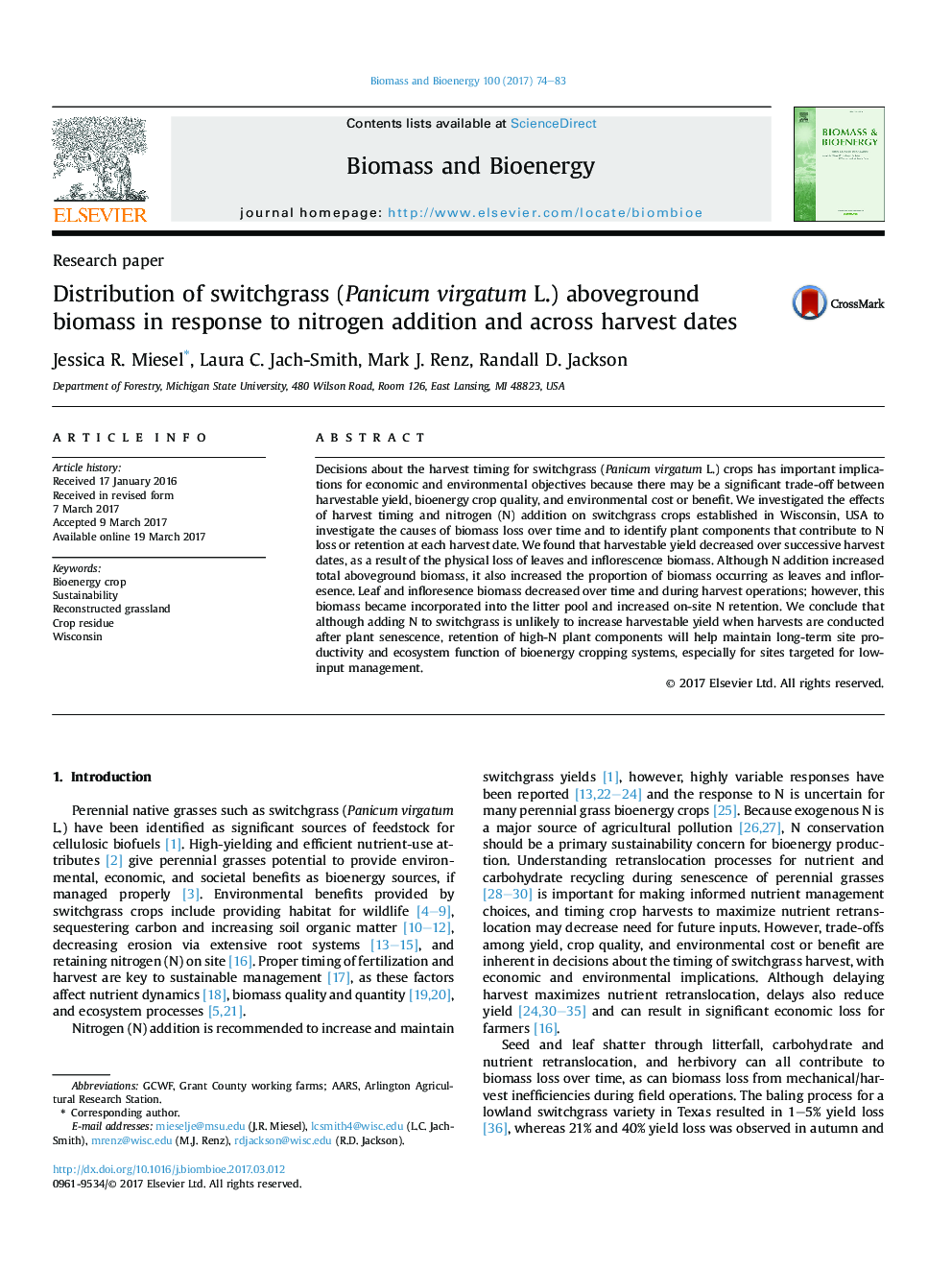| Article ID | Journal | Published Year | Pages | File Type |
|---|---|---|---|---|
| 4996251 | Biomass and Bioenergy | 2017 | 10 Pages |
•Inflorescence and leaf biomass decreased, and litter increased, with harvest date.•N addition resulted in a transient increase in inflorescence and leaf biomass.•Later harvests retained more N on-site in residual biomass (unharvested litter).•Fertilization and delayed harvests both contribute to similar on-site N retention.
Decisions about the harvest timing for switchgrass (Panicum virgatum L.) crops has important implications for economic and environmental objectives because there may be a significant trade-off between harvestable yield, bioenergy crop quality, and environmental cost or benefit. We investigated the effects of harvest timing and nitrogen (N) addition on switchgrass crops established in Wisconsin, USA to investigate the causes of biomass loss over time and to identify plant components that contribute to N loss or retention at each harvest date. We found that harvestable yield decreased over successive harvest dates, as a result of the physical loss of leaves and inflorescence biomass. Although N addition increased total aboveground biomass, it also increased the proportion of biomass occurring as leaves and infloresence. Leaf and infloresence biomass decreased over time and during harvest operations; however, this biomass became incorporated into the litter pool and increased on-site N retention. We conclude that although adding N to switchgrass is unlikely to increase harvestable yield when harvests are conducted after plant senescence, retention of high-N plant components will help maintain long-term site productivity and ecosystem function of bioenergy cropping systems, especially for sites targeted for low-input management.
